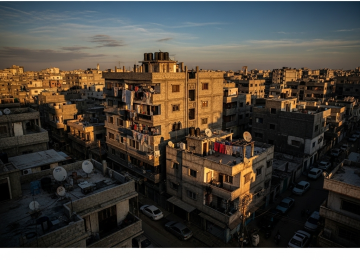Ukraine: 5 Key Developments Shaping Its Future Today
In the ever-shifting landscape of global affairs, the situation in **Ukraine** remains a central point of focus, impacting international security, economies, and humanitarian standards. The resilience of the Ukrainian people in the face of immense adversity continues to capture the world’s attention. Understanding the multifaceted challenges and opportunities facing the nation requires a closer look at several critical areas. From the dynamic frontlines of the conflict to the intricate diplomatic maneuvers on the world stage, the future of Ukraine is being forged daily through a series of complex and interconnected events. This article explores five key developments that are fundamentally shaping the nation’s path forward.
1. The Evolving Frontline and Military Strategy in Ukraine
The military conflict remains the most immediate and defining reality for Ukraine. The nature of the warfare has evolved significantly since the initial invasion, shifting from rapid offensives to a grueling war of attrition characterized by intense artillery duels, drone warfare, and fortified defensive lines. Both sides have adapted their strategies; Ukrainian forces have demonstrated remarkable ingenuity in leveraging advanced Western-supplied weaponry and asymmetrical tactics to counter a larger adversary.
The role of international military aid is paramount. The continuous supply of munitions, air defense systems, and armored vehicles from partner nations is critical for Ukraine’s ability to sustain its defense and conduct counter-offensive operations. However, the pace and volume of this support remain a subject of intense political debate among allies. As detailed by major news outlets like Reuters, the strategic calculus on the battlefield is directly tied to the logistical and political commitments of the international community. The integration of sophisticated drone technology for reconnaissance and precision strikes has become a hallmark of Ukraine’s modern military doctrine, fundamentally changing the dynamics of ground combat.

2. Humanitarian Crisis and International Aid Efforts
The human cost of the conflict is staggering. Millions of Ukrainians have been displaced from their homes, with a significant number seeking refuge in neighboring countries and beyond. Internally, the United Nations reports a severe humanitarian crisis, with millions in need of assistance, including food, water, shelter, and medical care. The deliberate targeting of civilian infrastructure, including energy facilities, hospitals, and residential buildings, has exacerbated the suffering, particularly during the harsh winter months.
In response, a massive international aid operation is underway. Non-governmental organizations (NGOs), government agencies, and private citizens worldwide have mobilized to provide support. Convoys of aid regularly cross the border, delivering essential supplies to the hardest-hit regions. Yet, the scale of the need often outstrips the available resources. The psychological toll on the population, especially children, is a long-term crisis that will require sustained mental health support for years to come. These ongoing relief efforts are a testament to global solidarity but also highlight the profound and lasting scars the war is inflicting on Ukrainian society.
3. The Path to European Union Integration
Amid the conflict, Ukraine has made significant strides on its path toward integration with the West, most notably by achieving candidate status for the European Union. This development represents a powerful symbolic and strategic victory, anchoring the country’s future firmly within the European family of nations. The process, however, is rigorous and demanding. Kyiv is required to implement a wide range of reforms, tackling everything from judicial independence and anti-corruption measures to aligning its economic and environmental regulations with EU standards.
The government has shown a strong commitment to this reform agenda, even while managing a full-scale war. The EU, in turn, has provided substantial financial and technical assistance to support this transition. Membership in the EU is seen not just as an economic opportunity but as a fundamental security guarantee and an affirmation of Ukraine’s sovereign, democratic identity. This journey toward integration is a critical pillar of the nation’s long-term strategy for stability and prosperity. To learn more about national transformations, you can read about other historical examples.

4. Economic Resilience and Reconstruction Plans
The Ukrainian economy has demonstrated extraordinary resilience under the most extreme conditions. Despite the destruction of key industrial assets, the blockade of Black Sea ports, and a massive decline in GDP, the country’s economic core continues to function. The IT sector, in particular, has shown remarkable adaptability, with many professionals continuing to work and export services from shelters and relocated offices. The agricultural sector, a cornerstone of the global food supply, continues to operate, albeit under immense strain.
Looking ahead, the conversation has already turned to post-war reconstruction. International partners and financial institutions are formulating plans for what will be a colossal undertaking, often compared to the Marshall Plan that rebuilt Europe after World War II. These plans focus not just on rebuilding what was destroyed but on modernizing Ukraine’s infrastructure, energy grid, and industries with a focus on green technology and sustainability. Securing the necessary investment and ensuring transparency in its allocation will be one of the greatest challenges of the post-war era.
5. Global Diplomatic and Geopolitical Shifts
The conflict in Ukraine has reshaped the geopolitical map. It has revitalized the NATO alliance, prompting historically neutral countries like Finland and Sweden to seek membership. It has also exposed deep divisions on the global stage, with nations around the world navigating complex allegiances. Ukraine’s diplomatic efforts, led by President Volodymyr Zelenskyy, have been relentless and effective in maintaining international support and isolating Russia.
The country has become a central actor in global diplomacy, advocating for its sovereignty at the United Nations and other international forums. The pursuit of a just and lasting peace is a key objective, guided by Ukraine’s 10-point peace formula, which calls for the full withdrawal of Russian troops and the restoration of its territorial integrity. The long-term security architecture of Europe is being redrawn, with Ukraine’s role and potential security guarantees at the very center of the discussion. The outcome of these diplomatic negotiations will determine not only the future of Ukraine but also the stability of the international order for decades to come.















